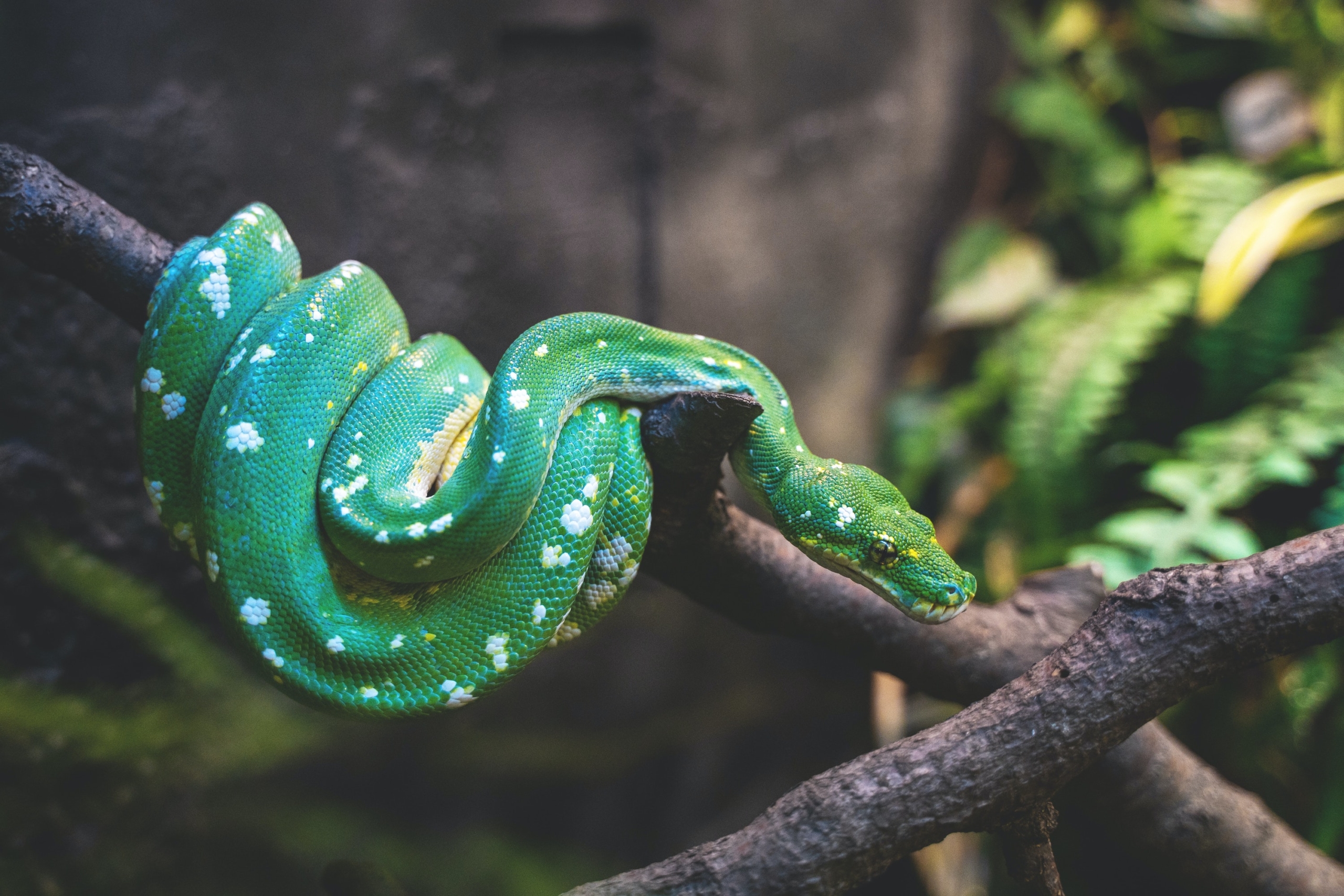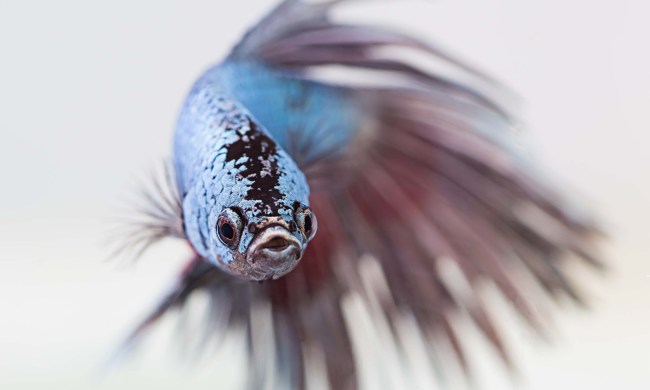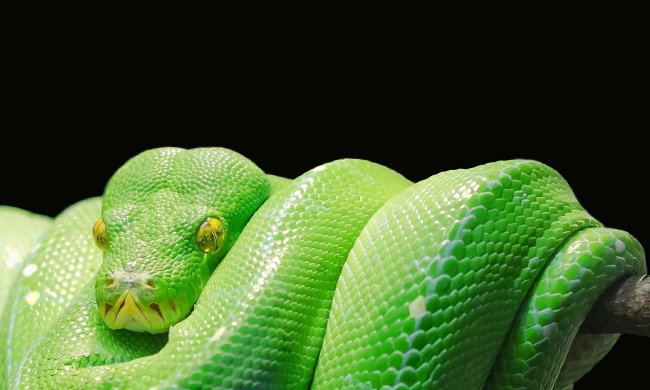Snakes can make excellent pets, but to keep your snake happy and healthy, you’ll need to design the right tank and habitat for him. A well-planned snake habitat can help your new pet feel secure and comfortable in his home, and it will ensure that his needs in terms of temperature and humidity are met. If you’re considering bringing home a pet snake, these tips can help you create an ideal snake habitat.

Start with the right enclosure
The enclosure you choose is the basis of your snake habitat, so it’s important to use an enclosure that gives your snake a safe, spacious area to live and explore. Many snake owners start with a 20-gallon snake aquarium and then upgrade the tank as the snake grows. Aquariums make it easy to view your snake from any angle, and they’re easy to convert and accessorize.
Alternatively, you can custom-build a tank. This might be ideal if you’re bringing home a larger snake that will need lots of space. Some snake owners install tanks into shelving units for easy vertical storage. The option that’s right for you will depend on your construction skills and the type of snake you’ll be bringing home.
Whatever enclosure you choose, make sure it has a top that closes securely. This is essential in keeping your snake safely contained, as well as in keeping other pets and kids from being able to access the snake. A screened top will allow for plenty of ventilation while still securing your snake inside the tank.
Select your substrate
Your snake’s substrate (or bedding) is important to his health. A quality substrate needs to be easy to clean and change out, and it should also allow your snake to burrow into it if he pleases.
You can choose from many types of substrate but consider what’s best for the type of snake you have. If your snake’s natural habitat is the desert, then a sand substrate will feel most natural. Other options include leaf litter and even wood shavings.
Add vegetation and hiding spots
To make your snake’s habitat as natural as possible, you can add in vegetation, rocks, alcoves, sticks, and other items. These additions aren’t just for aesthetics but also can create hiding spots for your snake. Hiding spots can help your snake feel more secure, reducing stress.
Most of these items are available at your favorite pet store. You’ll need to decide whether you want to purchase live or artificial plants. Live plants add a nice natural touch, but make sure you’re ready for the care they’ll require. Artificial plants are often an easier option — they’re maintenance-free and much easier to work with when you need to clean your snake’s tank.
Install a heat source
Your cold-blooded snake will need to be kept in a climate-controlled environment. A heat source is necessary to help your snake control his body temperature, but you’ll have a few heat source options. Some snake owners use heating pads set under the tank. Others opt for heat lamps installed over smooth rocks, creating a basking spot for your snake. Depending on your tank setup, one of these options may work better than the other.
However you keep your snake warm, it’s important to heat only half of the tank. This way, your snake can move into and out of the heat as needed and choose the right location to help keep his body temperature just right.
Set up your heat source so that the temperature in the tank never gets below 75 degrees. Installing multiple thermometers within the habitat can help you easily monitor the temperatures throughout the space and make adjustments as you need to.
This is also a good time to consider what you’ll do in the event of a power outage, especially during the winter. Investing in a generator to power the heat to the room and your heat lamp is a good strategy.
Establish humidity levels
In addition to needing an environment that’s kept at the right temperature, snakes need an environment that has the right amount of humidity. A tank that isn’t humid enough can make it difficult for your snake to shed his skin and to slither smoothly.
Humidity requirements vary depending on your snake’s species. A humidity gauge or hygrometer can help you monitor humidity, and you can add moisture to the tank by using a misting bottle (be careful not to spray your snake when misting the tank), installing a reptile humidifier, or even by soaking plants in water and adding them to the tank.
Set your snake up for success
Before you bring home a snake, the more you can understand about the natural snake habitat for his species, the better you’ll be able to meet his needs in your home. Different snake species have different needs when it comes to snake aquarium size, setup, and temperature. By thoroughly researching and understanding your snake’s needs, you can create a habitat that feels natural and comfortable for him.


